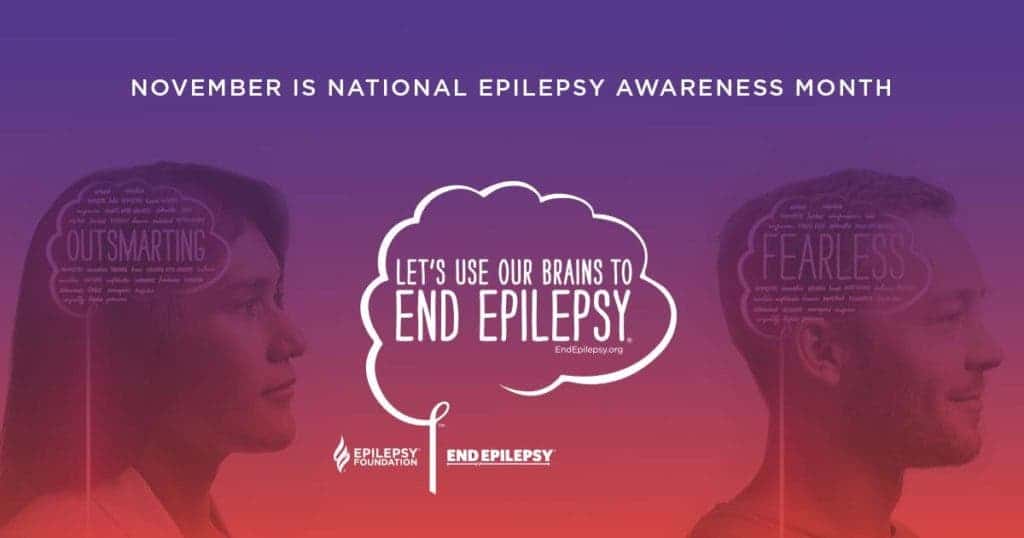
As Hippocrates once said “People think that epilepsy is divine simply because they don’t have any idea what causes epilepsy. But I believe that someday we will understand what causes epilepsy, and at that moment, we will cease to believe that it’s divine.”
Four of the hardest words to process are “you’ve had a seizure.” Once you have finally comprehended them, you still haven’t grasped the fact that they will change the course of your life. Those SCUBA diving lessons you had planned for next year? Forget them. The military? Nope. Even driving could be chancy.
According to the Centers for Disease Control and Prevention, as of 2015, 1.2 percent of the total United States population suffered from epilepsy. That’s 3.4 million people. Globally, it’s almost 40 million, with nearly 80 percent of cases occur in the developing world. According to a 2016 Lancet publication, the year prior resulted in 125,000 deaths, an increase from 112,000 in 1990. There are 150,000 new cases every year and one-in-26 people in the U.S. will develop the disease at some point in their lives. Alexander the Great, Theodore Roosevelt, Napoleon Bonaparte, Neil Young, and Prince are some of the most well-known epileptics.
We are the blessed, the cursed, the chosen, and the possessed. History has dictated the angels or demons that possess our bodies. The oldest detailed account of epilepsy comes from a Babylonian textbook of medicine comprising 40 tablets that date as far back as 2000 BC. This actually records many of the different seizure types we see in the present day. It emphasizes the supernatural nature of epilepsy, with each seizure type associated with the name of a spirit or god – usually evil. Treatment was, therefore, largely a spiritual matter.
In reality, epilepsy is a set of neurological disorders which can vary from unnoticeable periods of staring to the public’s perception which includes periods of vigorous shaking. Causes can stem from disruptions at the cellular level to dramatic brain injuries. Oh, and anyone who can discover what causes the cellular disruptions should book their plane ticket to Oslo, Norway. That Nobel prize for medicine is theirs.
There are six main types of generalized seizures: tonic-clonic, tonic, clonic, myoclonic, absence, and atonic seizures. All involve loss of consciousness and will typically happen without warning.
Sixty percent of seizures are convulsive. One-third of these begin as generalized seizures, affecting both hemispheres of the brain. The other two-thirds begin as focal seizures (that which affects only one hemisphere of the brain) which could then progress to a generalized seizure.
The remaining 40 percent of seizures are non-convulsive, such as the absence seizure, which is presented as a decreased level of consciousness and usually lasts about 10 seconds.
November, which is National Epilepsy Awareness Month, brings attention to the condition, and hopes to educate the public and dispel any myths. Probably two of the greatest myths (and most dangerous) are the ones you hear about putting something in the mouth of someone having a seizure and holding someone down who is having a seizure.
Contrary to popular belief, you cannot swallow your tongue. The only thing you’re going to do there is hurt the person you are trying to help. Tissue around the tongue prevents it from going back into the mouth, and any blood you might see comes from the person biting it. But that comes with the territory. Put something in an epileptic’s mouth you risk choking them or even breaking their teeth.
One of the worst misconceptions is that you should hold the person down. This action basically sends signals to the brain to fire even more uncontrollably, resulting in even more harm. The best course of action is to turn them over on their side, put something soft under their head and make sure that they are kept out of harm’s way. It’s as scary as hell to see, but make sure to stay calm and wait for the seizure to stop on its own.
A simple run-down of what to do in the event you see someone having a seizure is listed on the National Epilepsy Foundation’s website.
1) Stay with the person and start timing the seizure. Remain calm and check for a medical ID.
2) Keep the person safe. Move or guide away from harmful objects.
3) Turn the person onto their side if they are not awake and aware. Put something small and soft under the head and loosen tight clothes around neck.
4) Do NOT put anything in their mouth.
5) Do NOT restrain them.
6) Stay with the person until they are awake and alert after the seizure. Most seizures end in a few minutes.
There is no need to call emergency services unless the seizure lasts longer than five minutes, there are repeated seizures; the person has difficulty breathing; the seizure occurs in water; the person is injured, pregnant, or sick; they do not return to their usual state; or if it is their first time having a seizure.
While it is a dramatic and life-changing event, do not pity us. Do not look differently at us. In the book Electricity, Ray Robinson says it best when his main character Lily says “I’m important. I matter. I can do anything. I’m a sexy, strong woman that happens to have epilepsy. Do you get it? I have epilepsy but it’s not who I am.”






